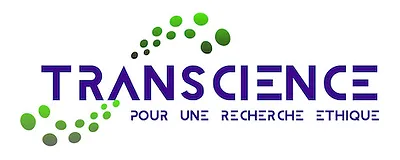Conventions
Having entered into force on December 2, 2005, the Protocol facilitates the updating of the Convention’s technical provisions in line with developments in scientific knowledge and practical experience since 1986, thanks to the introduction of a simplified procedure.
These provisions concern standards of care and housing for laboratory animals, as well as the presentation of statistical data on animal experimentation as required by the Convention.
It is one of the first international instruments to define ethical principles for the use of animals in experiments.
The Convention aims to reduce the number of experiments and the number of animals used for such purposes. It encourages parties to resort to such experiments only to the extent that other methods cannot be used.
Any research aimed at developing alternative methods should be encouraged.
Directive
This amendment to the Directive modifies Annexes III and IV concerning, respectively, requirements for the care and housing of animals and methods of killing them.
Member States must adopt the laws, regulations and administrative provisions necessary to comply with this Directive by 4 December 2025 at the latest. They shall apply those provisions from 4 December 2026.
This directive replaced directive 86/609/ECC and took effect on January 1, 2013. It should be seen as a step towards the ultimate goal of total replacement of procedures performed on live animals, as set out in its 10th recital.
In adopting this text, the European legislator has recognized the need – as soon as scientific progress allows – to put an end to animal experimentation. With this in mind, the Directive recommends that Member States develop and promote alternative methods, in particular by applying the 3Rs principle: Replacement, Reduction, Refinement.
Since 1959, the 3Rs principle has formed the basis of the ethical approach to be applied to animal experimentation in Europe and North America: according to the regulations, project designers must first consider methods that make it possible to replace animals, secondly – if none of these makes it possible to achieve the desired result – consider methods that reduce the number of animals as much as possible, and finally put in place for the animals used in their project all the means likely to reduce their suffering and improve their conditions of confinement.
The Directive also lays down a number of standards and obligations to ensure better protection of animals used for scientific purposes which apply to breeders, suppliers and users right up to the point where the animals are killed.
Regulations
Regulation (EU) 2019/1010 of the European Parliament and of the Council of June 5, 2019
This regulation amends the communication obligations of Member States set out in articles 43, 54 and 57 of the 2010 directive, and replaces the statistical report – presented every three years by the Commission – with the obligation for the Commission to create and maintain a dynamic central database and to disseminate statistical information each year.
Article 18 of the regulation stipulates that no cosmetic product whose final formula or any of its components have been tested on animals may be marketed in the European Union. The regulation has been applicable in all member states since July 11, 2013.
This prohibition applies on 4 levels:
* the marketing of finished products that have been tested on animals;
* the marketing of cosmetic products whose ingredients have been tested on animals;
* animal testing of finished cosmetic products within the European Union;
* animal testing of ingredients and ingredient combinations within the European Union.
This regulation, which came into force on June 1, 2007, applies to all chemical products (industrial products, cleaning products, paints, substances contained in clothing, electronic components, etc.).
Its aim is to protect human health and the environment from the risks associated with chemical substances, while promoting the competitiveness of the European Union’s chemical industry.
REACH requires that new tests on a substance involving vertebrate animals should only be carried out as a last resort, and in this spirit promotes data sharing and the use of alternative methods.
It should be noted that all new substances are subject to the obligation of proof, including those that may be used in the cosmetics industry, even though since 2013, in Europe, it has been forbidden to market cosmetic products that have been tested on animals (see below). This contradiction between the two regulations was clarified in 2014 by the European Commission in cooperation with ECHA: click here.
Decisions
Commission Implementing Decision (EU) 2020/569 of April 16, 2020
It establishes a common format and information content for the transmission of information to be reported by Member States under Directive 2010/63/EU in order to provide comparable information on the implementation of Directive 2010/63/EU.
Council Decision 2003/584/EC of July 22, 2003
It concerns the conclusion by the European Union of the Protocol amending the European Convention for the protection of vertebrate animals used for experimental and other scientific purposes.
Council Decision 1999/575/EC of March 23, 1998
It concerns the conclusion by the European Community, now the European Union, of the European Convention for the protection of vertebrate animals used for experimental and other scientific purposes.
Case law
Court of Justice of the European Union, September 21, 2016, aff.
The Court concludes that the marketing in the European Union of cosmetic products whose ingredients have been subject to animal testing outside the Union in order to enable the marketing of these products in third countries may be prohibited if the data resulting from this testing is used to prove the safety of the products concerned for the purposes of their marketing in the European Union.
Best practice recommendations
The documents listed below contain suggestions, recommendations and rules on how to meet the requirements of Directive 2010/63/EU, but they have no legal force. Ignorance of them is therefore neither enforceable nor invocable before the courts.
Six guides have been drawn up by a working group of experts appointed by the Member States and launched by the European Commission:
The European Commission’s Guide to animal welfare structures and national committees of October 9 and 10, 2014. It aims to define guidelines and principles of good practice for animal welfare structures and national committees to meet the requirements set out in Articles 26, 27 and 49 of Directive 2010/63/EU.
The European Commission’s Guide to the Education and Training Framework of February 19-20, 2014. It aims to develop a common education and training framework for the European Union, to meet the requirements of Directive 2010/63/EU in terms of the competences of all stakeholders in the use and care of animals used for scientific purposes and the free movement of personnel.
The European Commission’s Guide to inspections and enforcement of October 9 and 10, 2014. It aims to define the guidelines and principles of good practice concerning inspections and controls.
The European Commission’s Guide to project evaluation and retrospective assessment of September 18 and 19, 2013. It aims to define the guidelines and principles of good practice concerning project evaluation and the performance of retrospective assessments.
The European Commission’s Guide to the severity assessment framework of July 11 and 12, 2012. It contains legal clarifications of the severity evaluation framework, its components, participants, methods and working tools.
The European Commission’s Framework for the Genetically Altered Animals, November 25-26, 2021. In view of the rapid evolution of technologies and the difficulties in achieving a uniform understanding of the authorizations required at the different stages and of how to publish information on animals used to create and maintain genetically altered lines, the European Commission has organized a meeting of an additional expert working group on the creation, breeding and maintenance of genetically altered animals.
Additional documents have been drafted to complete the non-technical summaries (NTS) and restrospective assessments (NTS update):




